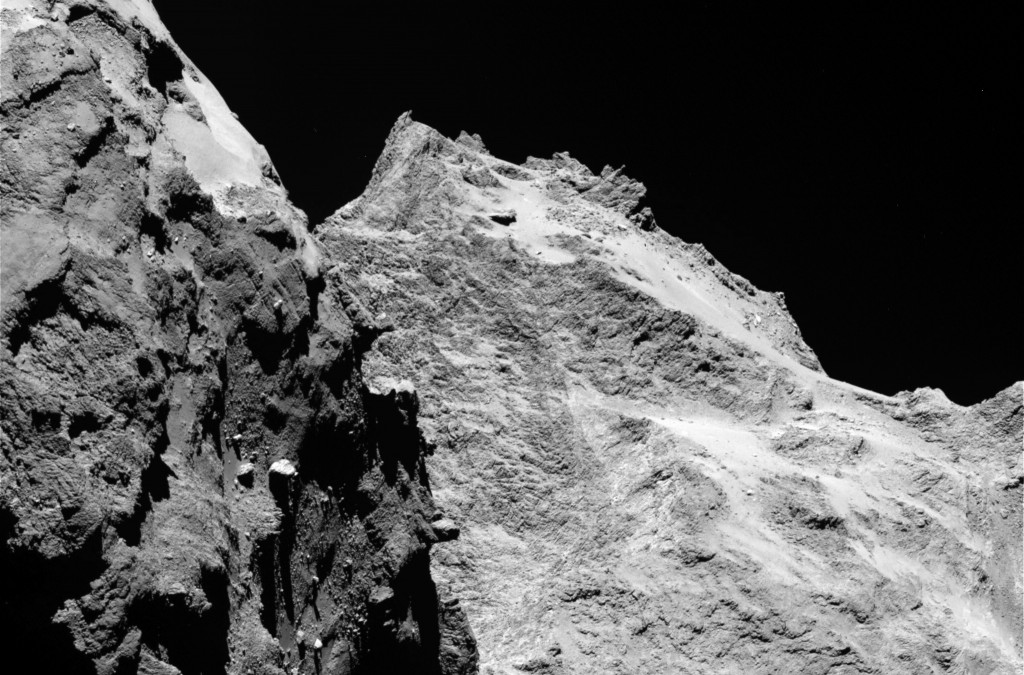
Kent scientists who are involved in aspects of the European Space Agency's Rosetta mission react to the landing of Philae onto comet 67P.
The European space agency’s Rosetta spacecraft has launched its Philae lander onto comet 67P – a first in space exploration.
Rosetta, after a 10 year and 6.4 billion kilometre expedition, has already provided scientists with the opportunity to study a comet close up, helping to reveal essential information about the formation of the Solar System.
As one of the most important parts of the mission, the deployment of the Philae lander to the surface will use its suite of instruments to help understand what comets are made of and how they formed.
Dr. Stephen Lowry of the University’s Centre for Astrophysics and Planetary Sciences, who is part of the science analysis team for the OSIRIS optical camera instrument on board the Rosetta orbiter, said: ‘Much of the planning for the landing phase of the mission relied heavily on images from the OSIRIS camera, in order to obtain a detailed map of the surface for landing site selection, and detailed characterisation of the site once a suitable patch on the surface was identified.’
There will be a series of science experiments conducted once the lander sets down, some of which will complement the science achievements of OSIRIS. In particular, earlier images sent back from OSIRIS showed a striking and unexpected ‘bi-lobed’ shape for the comet, possibly revealing that the comet may have formed from the merger of two separate comets.
Other experiments in the field of ‘mass spectrometry’ will also take place. Kent’s Emeritus Professor John Todd, an internationally recognised expert in this subject, has been a consultant for ‘The Ptolemy experiment’ now on board the Philae lander. This experiment is designed to determine the isotopic composition of the chemicals that make up the surface material of the comet, as well as the gases immediately above its surface.
Professsor Todd said: ‘It is hoped that simultaneous comparison of these results with those obtained from samples of standard reference compounds carried from Earth will provide crucial information on how the Earth was formed, and the role played by comets in this process.’
Another experiment on the lander is designed to study the interior of the comet by sending radio waves through it, which may be able to confirm its formation.
Rosetta is a European Space Agency (ESA) mission with contributions from its member states and NASA. Its progress can be tracked via the ESA’s Rosetta Blog.





